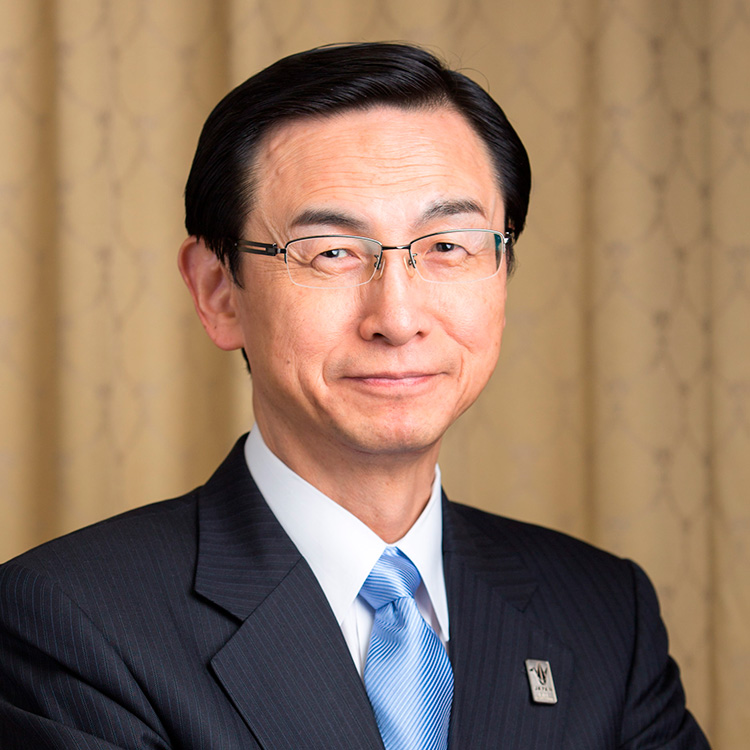Interview with Vice Principal Investigator, Dr. Hidehiro Mizusawa, on the Japan Leading Project for Rare Disease Whole-Genome Sequencing (RDWGS)

Q :What is the significance of the RDWGS working on whole-genome sequencing for rare diseases?
A :Many rare diseases are believed to be caused by genetic mutations. In the case of single-gene diseases, which are caused by the mutation of a single gene, identifying the gene mutation responsible for the disease may lead to the development of a treatment. For example, a mouse with the same genetic mutation could be created in order to understand how the disease occurs, so that a drug to treat the disease can be developed. There has recently been a case in which patients with very serious rare disease have been dramatically cured by gene therapy, in which an unmutated gene was administered. Thus, carrying out whole-genome sequencing for undiagnosed diseases with as yet unknown causative mutations may allow the cause to be identified, which will bring great joy to patients waiting for the development of a therapy.
Rare diseases also include multifactorial diseases, which involve multiple genes or environmental factors. For example, there are some 130,000 patients in Japan with Parkinson’s disease, of which over 90% are said to be multifactorial. In a multifactorial disease, there are mutations of multiple genes, some of which promote the disease, and some of which suppress it—the particular combination of these mutations determines whether or not an individual is susceptible to the disease. Whole-genome sequencing can identify these individual differences, which will contribute to the development of “precision medicine” where drugs or therapies are selected to suit the individual.
With single-gene diseases, regions within the genome other than the mutated gene may be related to susceptibility to the disease. Therefore, even when the causative mutation is known, identifying the parts of the genome related to susceptibility to the disease through whole-genome sequencing may be expected to lead to the development of better therapies.
Q :Please explain the objectives of the RDWGS project and how it will advance.
A :The objective of this project is to establish Whole-Genome Sequencing (WGS) Infrastructure capable of performing whole-genome sequencing efficiently and with a high degree of reliability. We will conduct the research and development needed to create the infrastructure while sequencing a relatively small number of samples. This is why we call this project a “leading project” and it will lead to a full-fledged project in the future.
The preliminary sequencing will be carried out using existing samples, which are blood or other material provided by patients. To clarify the relationship between rare diseases and genetic mutations, the data from genome sequencing of samples need to be cross-referenced with clinical information, which is a record of the condition and treatment history of patients. There are about 10 research centers in Japan conducting this research, and they have been collecting samples and clinical information from cooperating medical institutions that actually treat patients with rare diseases. However, whole-genome sequencing is costly and labor-intensive, so instead, most of the sequencing has been exome sequencing, which only examines the protein-coding regions of genes in a genome. The RDWGS plans to conduct whole-genome sequencing of approximately 9,000 samples held by these research centers. Already by March 2021, 2,300 whole-genome sequences were completed, and the data have been returned to the research centers. I expect that the research centers will yield various discoveries on the basis of these data.
The whole-genome sequencing data will be useful for researchers outside of the RDWGS and pharmaceutical companies, and putting in place systems for providing data to external parties is an important mission for this project. We are working on construction of a database to store whole-genome sequencing data and clinical information, and we are examining the procedures for sharing the data. Because genome data are the ultimate in personal information, we are focused on ensuring security in our handling of these data. The Japan Agency for Medical Research and Development (AMED) is also planning to launch a data utilization service called Controlled shAring of geNome and cliNical Datasets (CANNDs), so there will be two routes for information to be shared externally.
After the RDWGS is completed, we will then move to full-scale gene sequencing. The WGS Infrastructure that has been put in place will act as a governmental framework for receiving samples and clinical information directly from medical institutions nationwide, carrying out whole-genome sequencing, and making the data widely available.

Figure: Framework of the Japan Leading Project for Rare Disease Whole-Genome Sequencing (RDWGS)
Q :Please share your own thoughts about this project.
A :After graduating from university in 1976, I became a neurologist. I discovered a particular muscle disease, and I presented a paper on it to an academic society in 1978. It wasn’t until 2001, over 20 years after the discovery of the disease, that the gene mutation causing it was identified. Until then, however much we wanted to develop a treatment, we were powerless to do anything. Identification of the causative mutation was the start that allowed drug development to progress rapidly.
More than 9,000 diseases have been registered in an international database of diseases thought to be caused by genetic mutations, and most of these are rare diseases. However, the causative mutations of only about 6,000 of these have been identified—the causes of more than 3,000 diseases on the database are still unknown.
From my own experience and in light of the current situation, I believe that building a complete picture of the causes within the genome of rare diseases is the most important thing we can do to help patients who so desperately want therapies to be developed as soon as possible. I very much hope that this project will contribute to that goal.